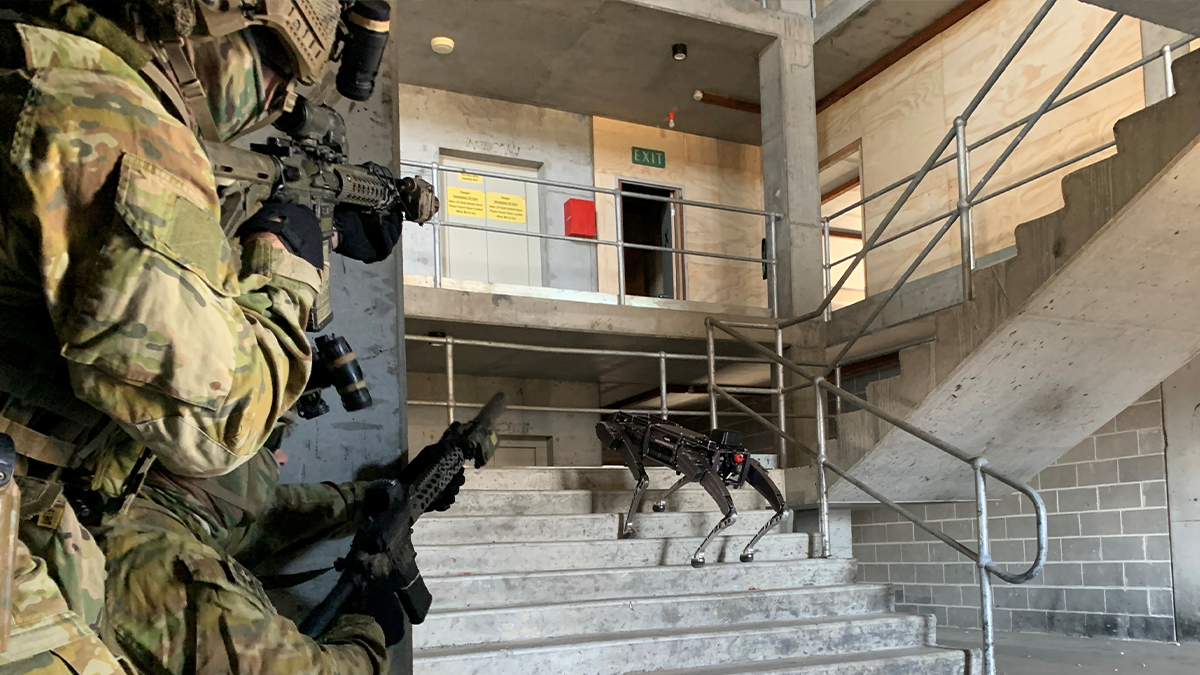In the same way that humans historically praise animals and vehicles that have served in combat, soldiers form bonds with their robots.
Soldiers already show signs of grief when confronting a loss of their military working dogs or explosive ordnance disposal robots. Service personnel provide first-hand accounts of this grief, not unlike mourning a comrade or family member:
“I mean, you took care of that thing as well as you did your team members. And you made sure it was cleaned up, and made sure the batteries were always charged. And if you were not using it, it was tucked safely away as best could be because you knew if something happened to the robot, well then, it was your turn, and nobody likes to think that.”
Before the age of war machines, there were war animals. War elephants were not merely possessed by their masters in ancient India; the author Banabhatta wrote about his master’s favourite war elephant as being the emperor’s “external heart… his friend in battle”. Military working dogs in the RAAF end up retiring at the home of their handlers at the end of their Air Force service and dogs like Kuga are awarded medals for their bravery.
This human connection goes beyond simply using animals or vehicles in combat. It treats them as an extension of ourselves, a separate entity, making it possible to name them, characterise them with human traits and grieve for them in a way that would be only reserved for loved ones:
“Immediately following the blast that destroyed Stacy 4, I can still remember the feeling of anger, and lots of it. “My beautiful robot was killed …” was actually the statement I made to my team leader.
Therefore, as the Army upscales robotics and autonomous systems (RAS) to a Brigade-sized fleet of uncrewed vehicles, as described in the 2020 Force Structure Plan, it is worth forecasting the increased human-machine relationships which will offer superiority in combat, as well as risks and opportunities to the human dimension.

Soldiers will bond with robots similar to how Marines bond with their rifles, as imagined by former USMC Major General WH Rupertus:
“My rifle is my friend…my rifle is human, even as I”
As the Australian Army buys small-wheeled robots and increases the Optionally Crewed Combat Vehicle (OCCV) fleet to 20 vehicles, they will become a manifestation of some of the human-machine relationships that we have already seen tales of in science-fiction: droids from Star Wars, Baymax from Big Hero 6 and Chappie. In these robot-human stories, each had a unique relationship with their human master, just as Banabhatta wrote of the relationship between war elephants and their masters, and John Simpson Kirkpatrick is remembered along with his donkey. Each RAS will be uniquely numbered and their service records will tell a story in the same way that each aircraft’s tail number tells a unique history of service.
Soldiers will be responsible for these future machines in much the same way that we entrust soldiers to maintain their equipment today. However, we are yet to explore the envelope of scaled human-machine bonding between robots used in combat and their all-Corps operators. Studies into the Australian mining industry and explosive ordnance disposal teams’ integration with robotics have already shown the value of anticipating the consequences of substituting or augmenting human operators.
Listening to the voices of personnel who have lost robots in combat, the imperative for introducing future fleets of uncrewed vehicles includes wide consideration for the wellbeing of those soldiers who will become masters – if not comrades – with these future robots. The ADF Joint RAS Strategy is an opportunity to ensure that our sailors, soldiers, airmen and airwomen are best prepared for their work alongside robots as technological teammates, and anticipate for the challenges that increased human-machine teaming will bring.
Jacob Choi is posted as SO3 Artificial Intelligence at Army’s Robotics and Autonomous Systems (RAS) Implementation and Coordination Office (RICO) within the Future Land Warfare Branch at Army Headquarters. He is studying a Masters of Applied Cybernetics as part of the 2020 3Ainstitute cohort at The Australian National University. Views written above are his own and do not necessarily reflect those of Defence.

